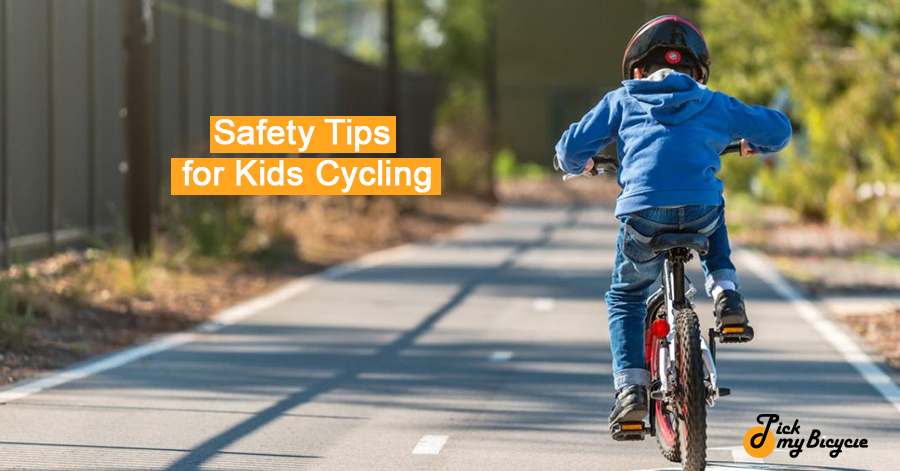Safety Tips For Kids Cycling
Cycling is a terrific outdoor sport that is especially enjoyable for young children. On the other hand, cycling-related injuries are more prevalent in youngsters than different sports-related damages. Youngsters must know to ride bicycles under the care of their parents and in a safe setting to ensure their safety. A developing youngster seeks new learning chances. You are seeking productive and healthy outlets for your energy as a parent. Cycling is a perfect way to get some exercise. There are several causes why it is an excellent sport. Foremost, it is enjoyable and provides mobility and physical activity for your baby's delicate muscles. It also aids in the development of coordination and equilibrium. However, despite all of the positives, address safety problems. The following are some easy principles when riding a bike with small children.
Put on a helmet:
It's the most fundamental guideline, but almost half of parents claim their child ignores it. A helmet is the only line of protection between your child's brain and the point of contact. It is generally a rigid surface like roads or asphalt. If it's only around the corner, your child should wear one every time they ride their bike. However, football helmets and helmets are both defensive and not ideal for riding. When your child rides a bike, you need them to wear a riding helmet. Ensure your kids are wearing the shoes and strapped up before you begin. When you put your helmet on, you should confirm it fits.
The ideal bicycle:
One of the best methods to help your child prevent bike accidents and enjoy cycling is to have the correct bike weight, size, and style. You want them to stop and have a seat size that lets them reach the ground comfortably with the pedals. Discovering the proper size may be difficult! Children quickly grow, so the prime factors are wheel sizes and weight. A big bike that is difficult to work does not make it easier to manage the brakes, training wheels, and gears.
Wear no loose clothing:
Tires, chains, spokes, and other exposed moving mechanical elements are common on bicycles. It raises the possibility of loose, flowing garments getting involved in these satisfying pieces and triggering an accident. Kids should wear close-fitting clothes to avoid tangles. Most sports goods retailers sell specialized riding clothes, such as cycling shorts and t-shirts. Even the apparel contains luminous fabric to improve vision in the dark.
Check Hardware:
It is also critical that your child's bike be the correct size. If your child is learning to ride a bike, they should be able to sit on the seat with both feet on the ground. Check that the tires get filled correctly, the spokes are tight, the chain is secure, and the handlebars are appropriate. You can take the bike to a nearby shop for service if you need a hardware inspection.
If possible, stay on pavements or paths:
Children under ten are to ride their cycle on pavements or cycling routes. If your child is beyond ten but still learning to drive, you should avoid off the road until they are more confident and less prone to being overwhelmed by car traffic. Older youngsters usually have honed their abilities to the point where they are ready to drive on the road.
Avoid using devices or listening to music:
Driving with headphones on to listen to music or chat on the phone can be a risky distraction that leads to prime accidents. While riding, children should not use cell phones or listen to music. Cycling is an exciting sport that gets experienced without interruptions. Using cell phones or listening to songs distracts your attention from things around you, which might cause misfortune.
Keep an eye out for automobiles at the entrances:
For one reason, peaceful neighborhoods can be equally deadly as significant roadways. Some parked automobiles swerve unexpectedly, and drivers know to back out of driveways without ensuring that the area behind them is empty. You can encourage them to pay attention to traffic and be careful about other vehicles when riding their bikes because young children are not always visible.
The bike is in good condition:
Nothing is more unsafe than a bike that does not get proper maintenance. Accidents might occur as a result of flat tires or faulty brakes. Check your child's bike once a month and take it to your local bike shop at the start of the season. Take a deep breath and exit once you've completed these seven precautions. Cycling's health advantages significantly exceed the hazards.
Use PPE when cycling:
A helmet is insufficient. Other safety equipment, such as elbow, knuckle, and knee protectors, may be required for children. These apparatuses aid in reducing the degree of injuries sustained in the case of a fall. Aside from these apparent items, one of the most underappreciated bicycle safety suggestions for youngsters is to wear a mouthguard. This equipment guards your mouth and teeth against harm.
Hand gestures are required:
Because they often lose control of their bicycle, many adults regard the usage of hand signals as a risky part of riding a child's bicycle. Another element of cycling that gets mastered in childhood is to guarantee that every rider is safe when cycling on a busy road. Teaching children prime safety advice such as hand signals can help them enjoy a long career as safe bikers that makes drivers and other cyclists informed of their intended road movements.
Encourage friends to go cycling:
Cycling to school with pals might make the trip more enjoyable and safe. Encourage your child to develop a small group of pals with whom they ride bikes. They may look for one another, share responsibility for safety, and give company during the journey. However, while traveling in a group, tell kids not to become sidetracked or play too much - safety always comes first.
Summary:
To guarantee their safety, youngsters must obey traffic and riding laws. Use the proper tools. Continue straight ahead, following the traffic signs. In addition, learn how to avoid hazards and converse with other drivers. You want a clear idea of guidelines with your kids as a parent before they begin cycling. You may set a positive example by following the regulations while cycling with your youngsters. Motivate kids to be trustworthy and safe riders!

